I’m not good with remembering dates—I barely get by with my kids’, wife’s, and parents’ birthdays. The big reason why I don’t get into trouble with my wife for forgetting our wedding anniversary is because we got married on her birthday.
But I remember the day I visited Jeju for the first time. June 17, 2015.
As you can surely tell, I miss Jeju—everything about it, except for the few garish tourist spots. The ironic thing about my affection for Jeju is that I’ve always had this preconceived notion that it was an overrated, artificial vacation destination with tourist prices, xenophobic natives, and bad climate. That’s why I never had any interest in visiting the island. Until of course my wife made me.
You know how when you’re interviewing for something, they always ask you that loaded question—what are your strengths and weaknesses, in your opinion? My answer for the strength part has been the same for the past 30 years—I can assess and analyze the results of my decisions and make necessary corrections very quickly. Translation: I know and admit it when I effed up. Boy… was I ever wrong about Jeju.
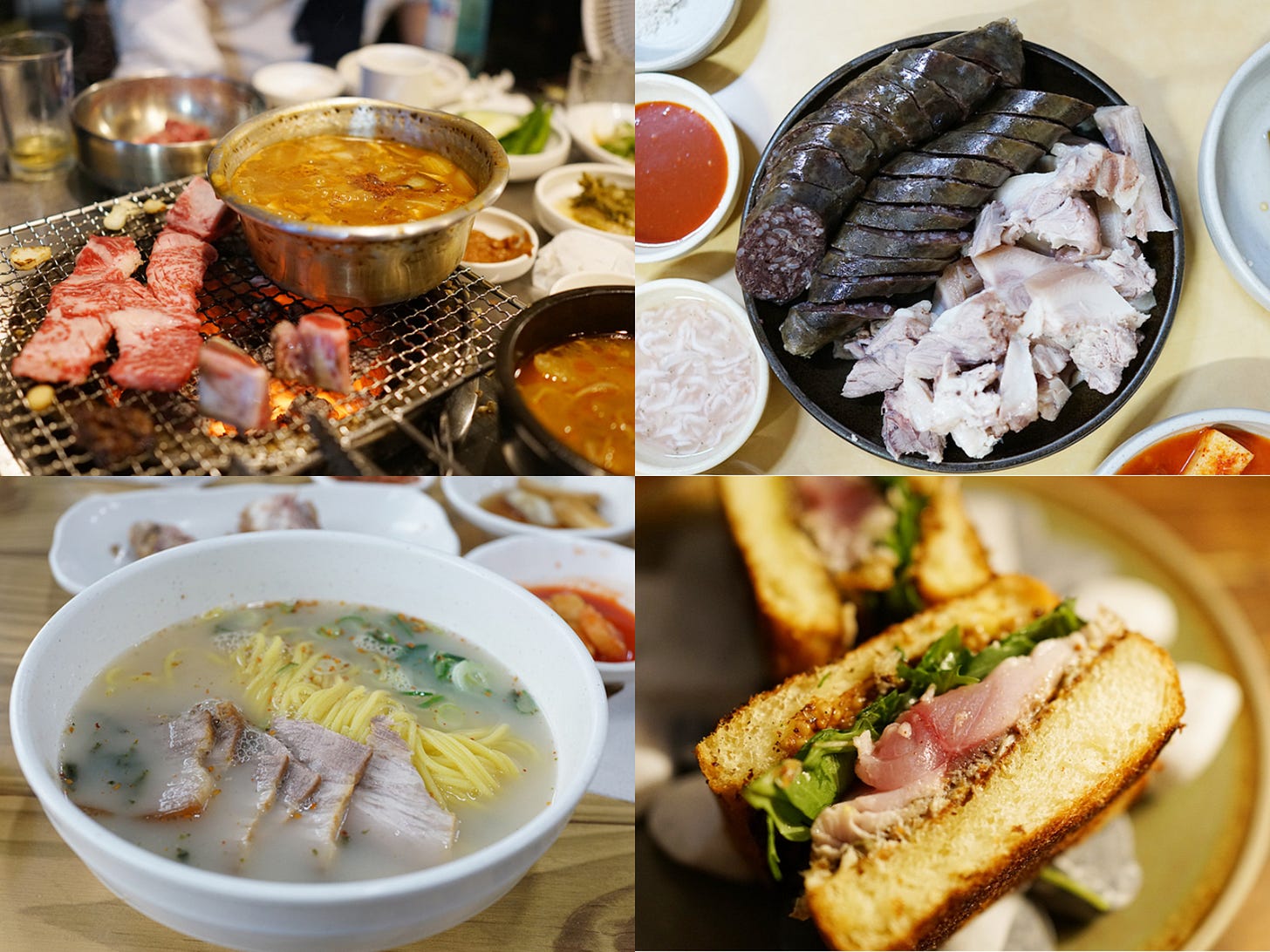
Being an omnivore (not in quantity, mind you), I was initially attracted to the quality and the variety of culinary offerings Jeju had. Other than the famously delicious Jeju pork and the otherworldly seafood, I found Indian, Persian, Mexican, German, and even a Moroccan place in Jeju. Go to a traditional market and you can have a uniquely Jeju meal for less than $5 USD (no tax, no tip), or you can make reservations at some of the best-rated restaurants in all of South Korea (really!).
But the real reason why I fell in love with Jeju was Jeju Olle Trail, or 제주 올레길. Fashioned after the Camino de Santiago in Spain, the famed pilgrimage trail of St. James, Seo Myong-suk (서명숙), a Jeju native and a journalist, started developing the Olle Trail in 2007 in southeastern part of Jeju Island (Route 1). Now there are a total of 27 courses that spans 437 kilometers, or 271 miles, mostly through the coastal line of Jeju, as shown on the map at the top.
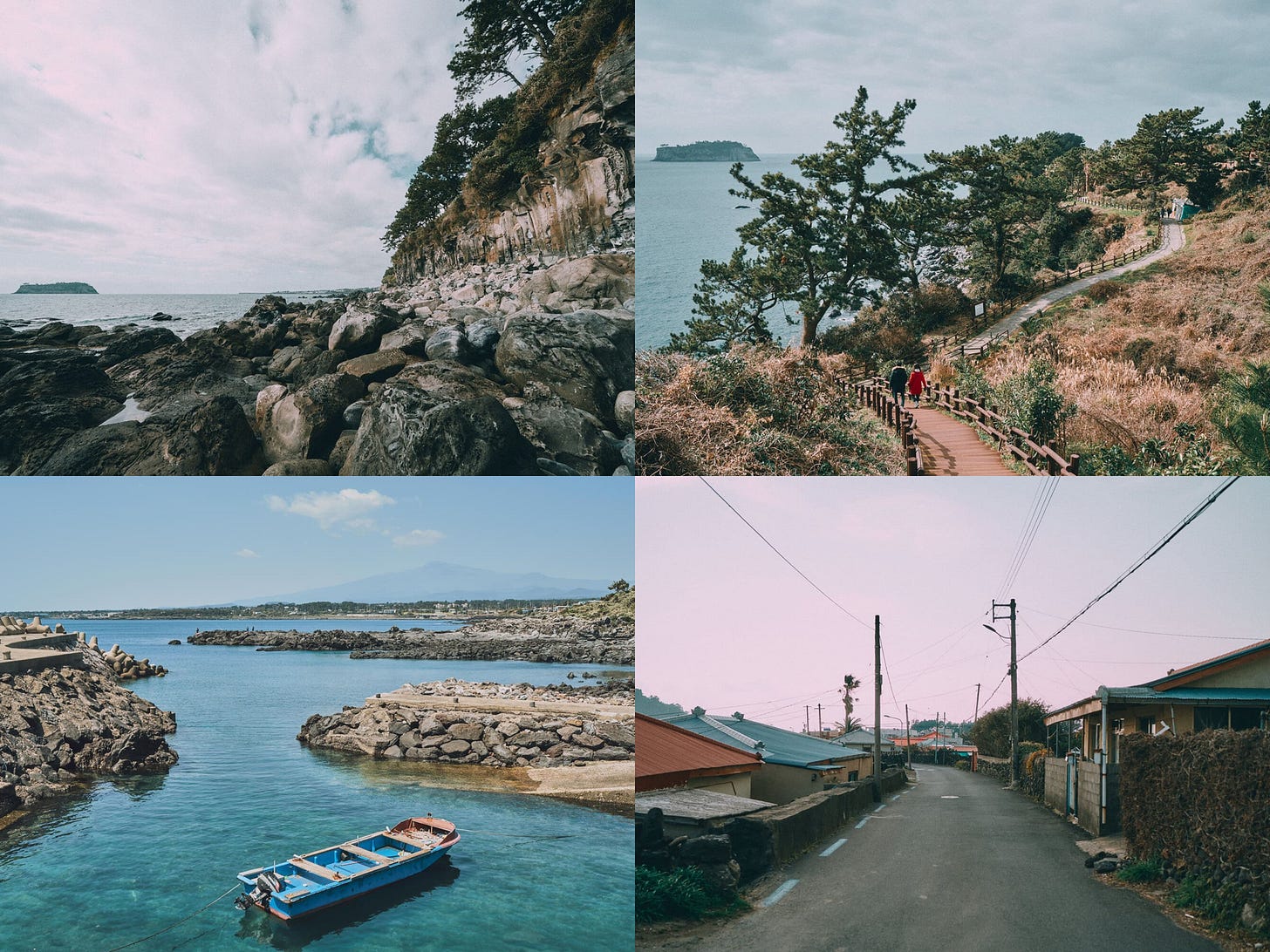
What is Olle (올레), first of all? It is a Jeju dialect word that means “short and narrow pathway (from the main roads) leading to your house.” The way I understand it—because Jeju dialect is like a foreign language even to Koreans—it’s supposed to signify something that you’re close to the warmth and comfort of your home.
It would be prudent to take you now to the official Jeju Olle Trail website. They’ve done an excellent job translating the whole thing into English—(almost) nothing gets lost. It’s definitely something you want to check out if you’re at all interested in visiting Jeju some time. It even shows you where to eat, rest your tired legs and feet, and stay overnight on or near the routes.
So, here’s the thing. My actual bucket list item is finishing the entire 27 courses. Not having even started, and living on the other side of the Pacific, this sounds like a pipedream—and it might end up as one but it’s among the top items on my list nonetheless. Hope to write about it and bring you some real sights and sounds on here.
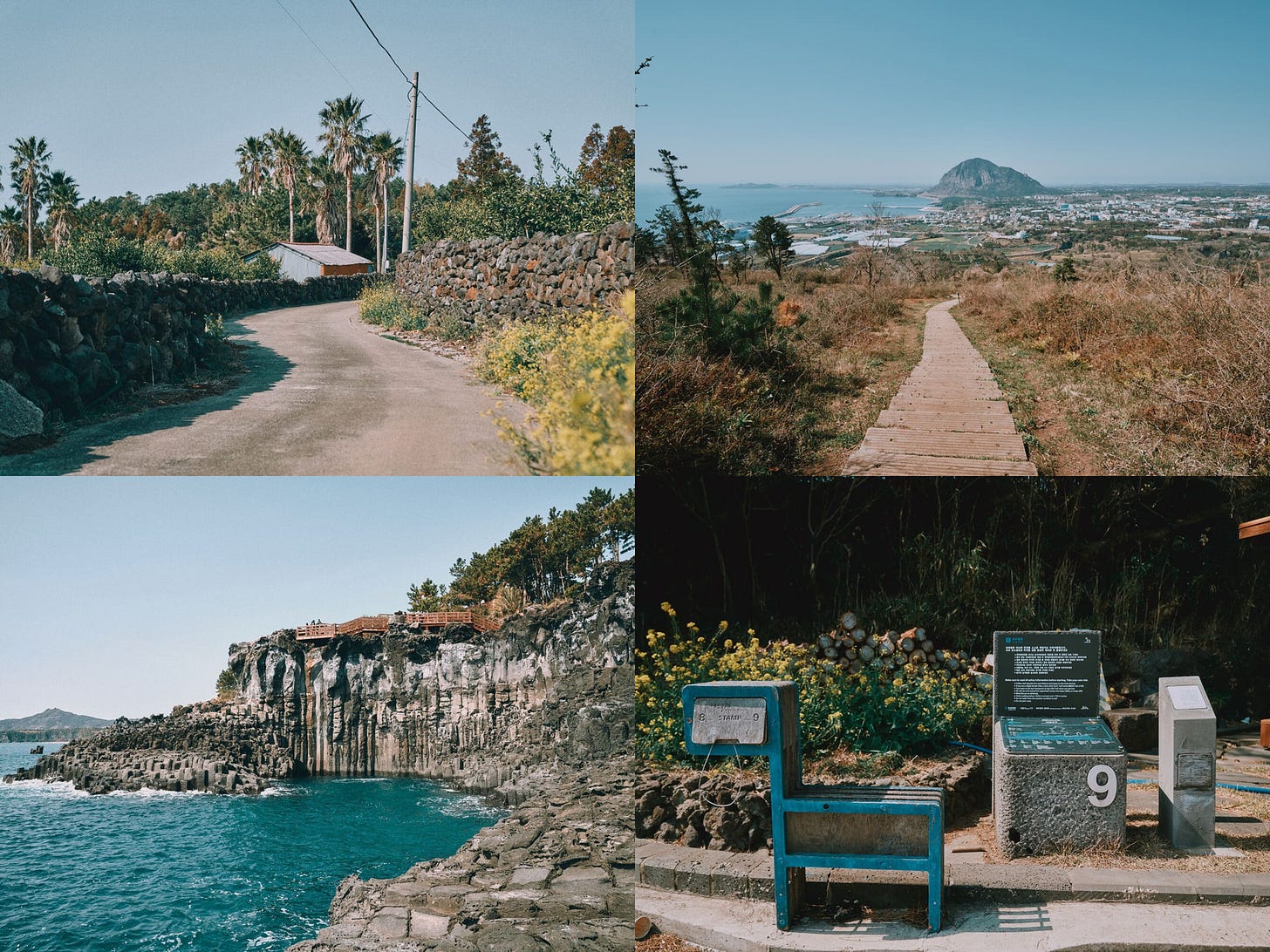
Here are a few things that are interesting about the trail.
This is called gahn-seh (간세), modeled after a small breed of horse indigenous to Jeju called joh-rang-mahl (조랑말). The word gahn-seh, again a Jeju-specific dialect, is an adjective that describes a way someone or something moves in a slow, aimless, lazy stroll—the way a joh-rang-mahl walks. Hence, the symbol. The implication here quite clearly is that you enjoy the walk and the scenery in a lazy, aimless stroll, not a race against time.
Then, there are these blue and orange markers (arrows) at the forks on the trail that indicate the correct direction of any given route. The orange markers are for the trekkers who are walking in the reverse direction, as many do—some routes are supposedly better to do so at certain times of the day.
At random points on the routes, you will also see these two-colored ribbons to tell you that you’re on the right track. I’ve read that quite a few people get lost, I mean, off the track, but that’s part of the experience. Each course is about 10 miles long with varying degrees of undulation and takes 6 to 7 hours to complete in a leisurely pace.
Jeju Olle Passport is something for your own keepsake and pride. For each route, there are 3 points where “Start,” “Midway,” and “Finish” stamps are located. Each route has its own logo, and once you complete the passport by collecting all the stamp imprints…
… you get featured on the Jeju Olle homepage. Like this.
Let’s take a look at more photos. These are all on the Jeju Olle website, BTW.
There are wheelchair accessible sections throughout the courses. You can check for those on the Jeju Olle website. The bottom left picture is an eyesore, to be sure, but part of Korea’s dark history. The Japanese imperialists built these hideouts for their artillery during the World War II when they occupied Korea.
The walkway path you see on the bottom right is one of the very few sections of the Olle routes that I’ve actually been on. It was raining lightly that day, and it was such a peaceful and calming experience, the likes of which I don’t think I’ve ever had before. At the far end of the path, there are a few cafes waiting for the weary.
Throughout the trail, you will come across a number of small fishing ports, unmanned tangerine sales stands, photo spots to die for… But remember, you will be walking through some privately owned lands, so be respectful.
And finally, there is a YouTuber who lives in Jeju who *used to* upload Jeju walking videos. I’ve noticed that he/she started doing the whole Olle Trail couple of years ago and implored with him/her to please complete the project. Probably because of lack of interest from others, the person stopped uploading altogether about a year ago. But Routes 1 to 14 are on YouTube in their entirety. If you have one of those widescreen monitors, it’s awesome to play them on one side of the monitor and have a separate browser for work on the other side of the monitor, like I have been doing for the past 4~5 years.
Someday, someday, someday… (I’ve been muttering these words for the past 9 years.)





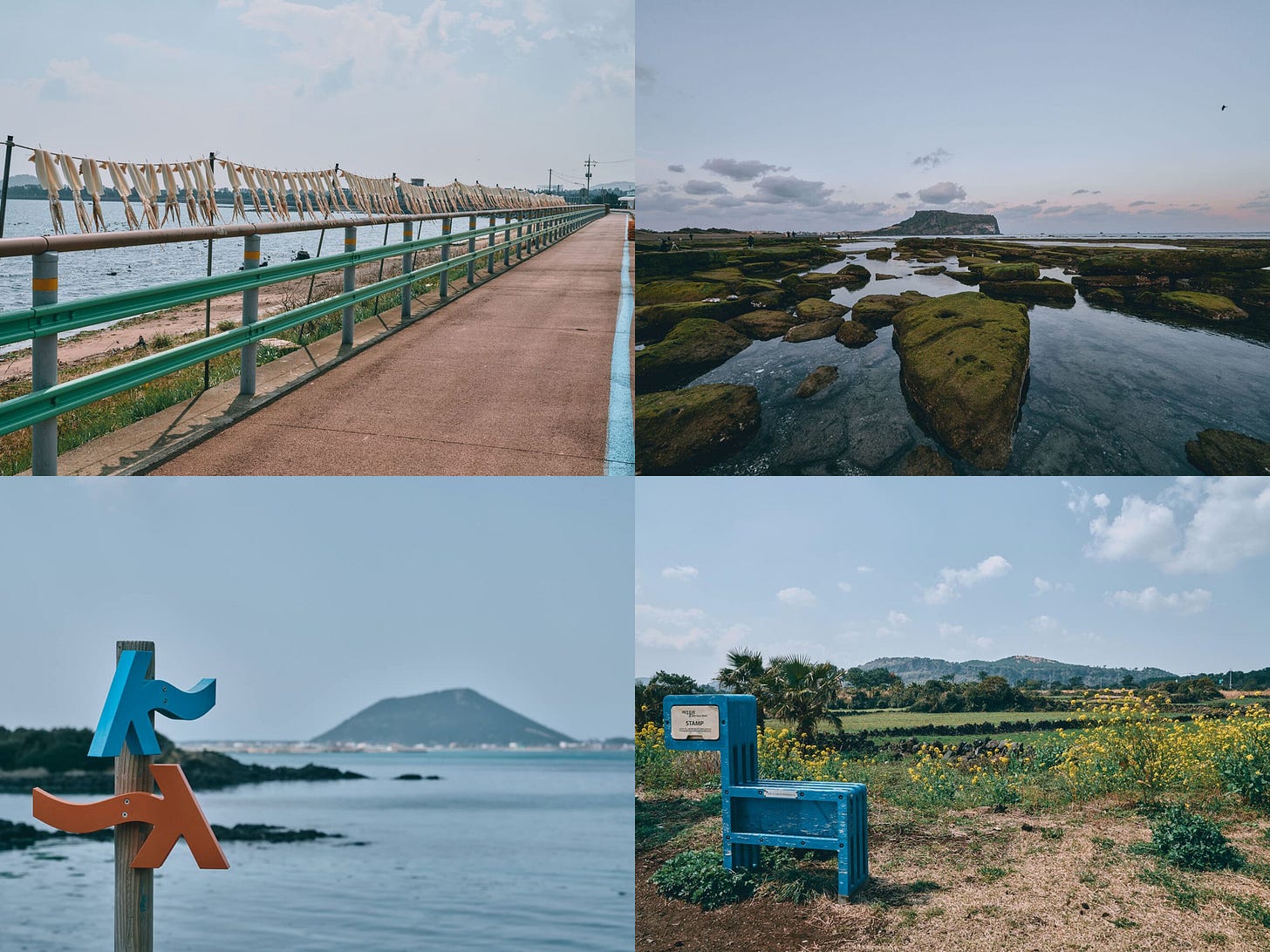

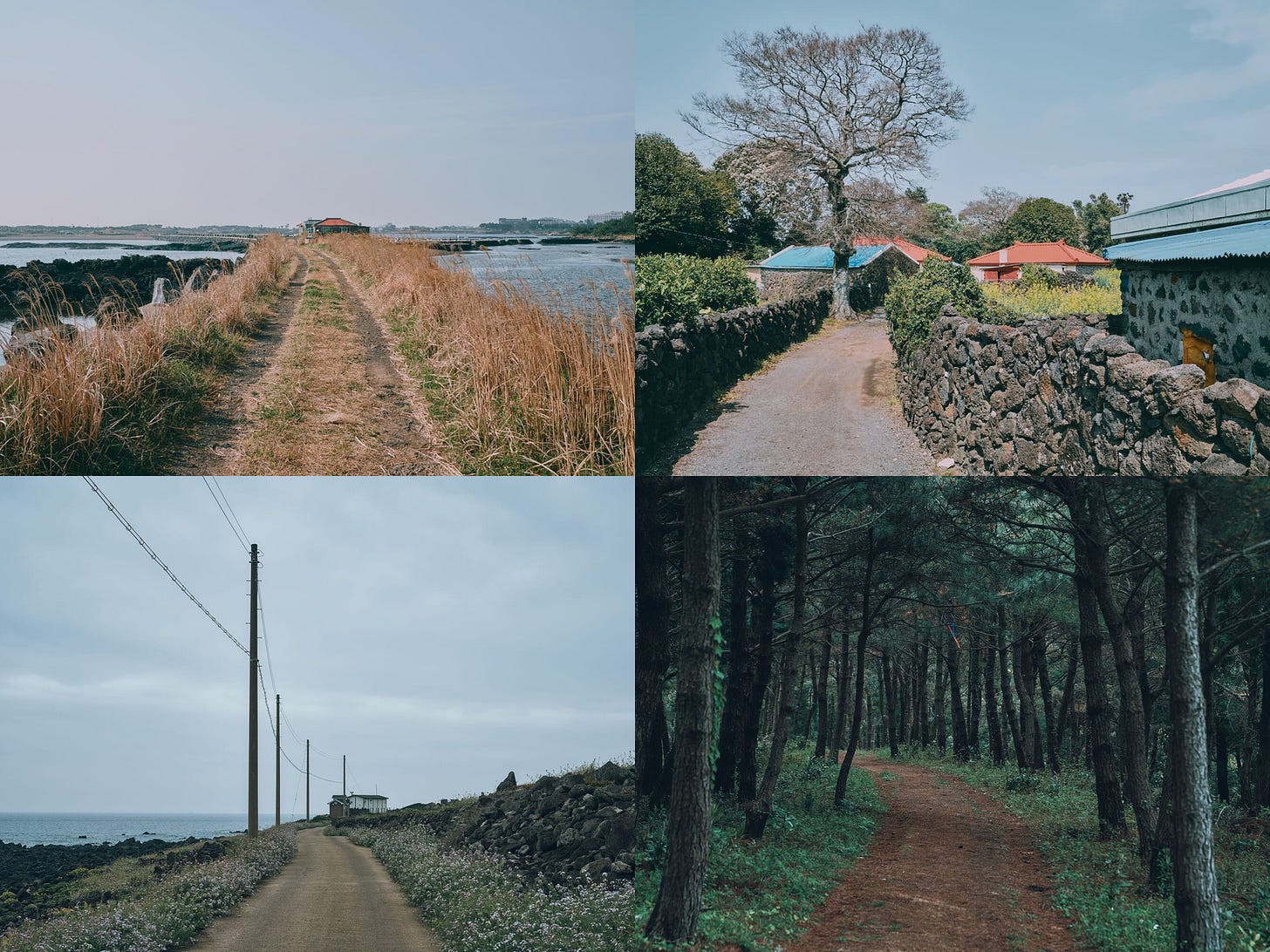



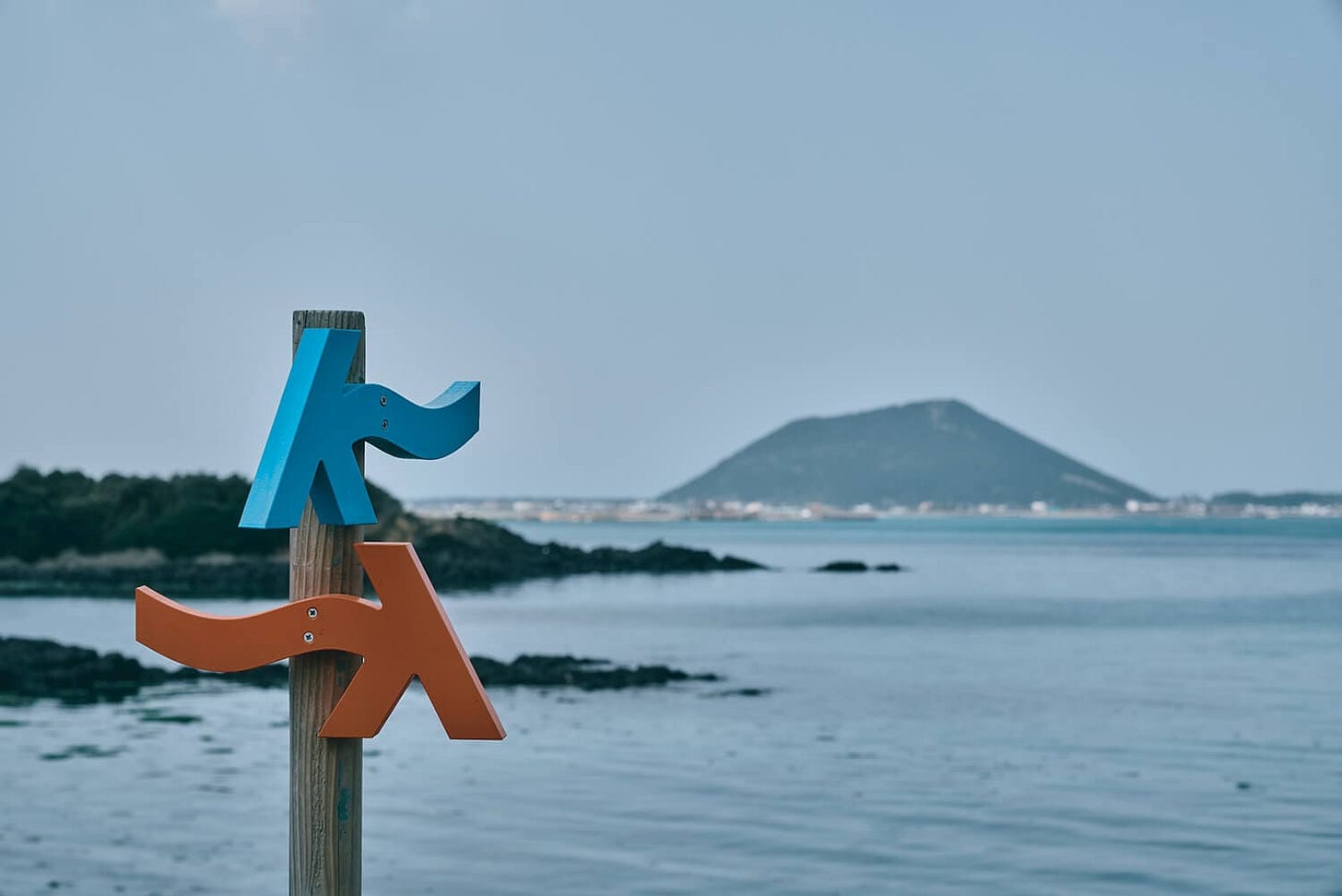




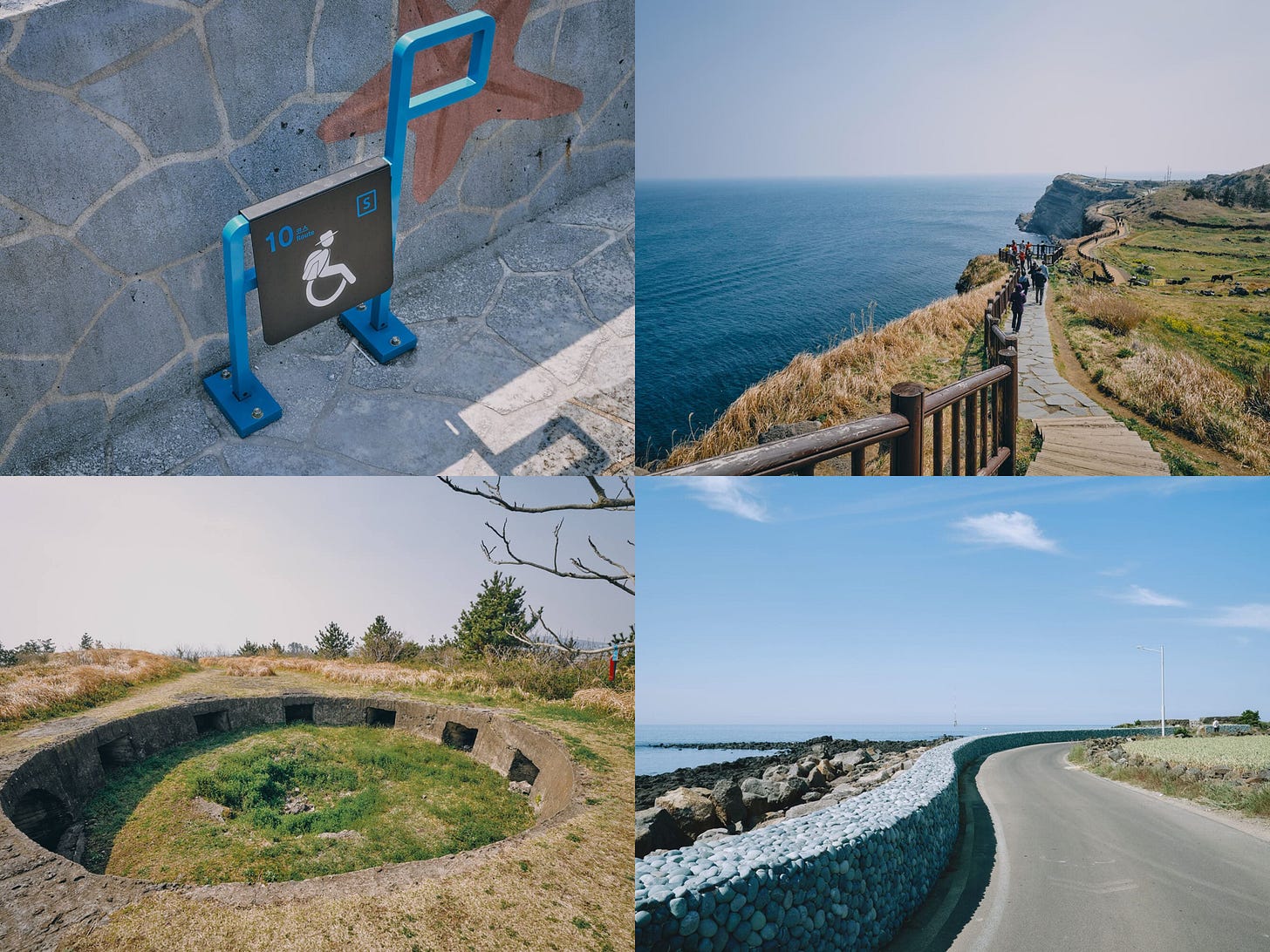
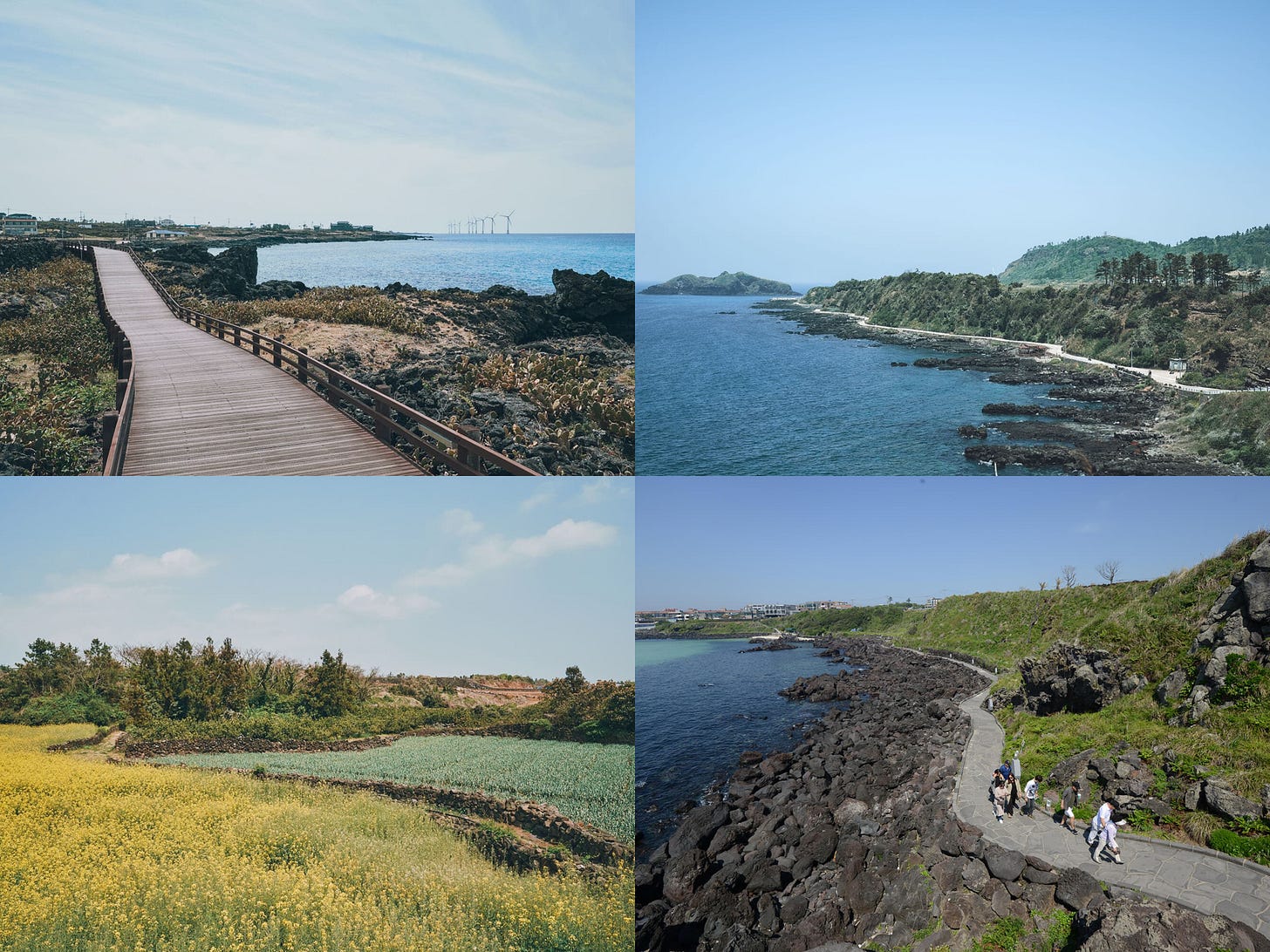
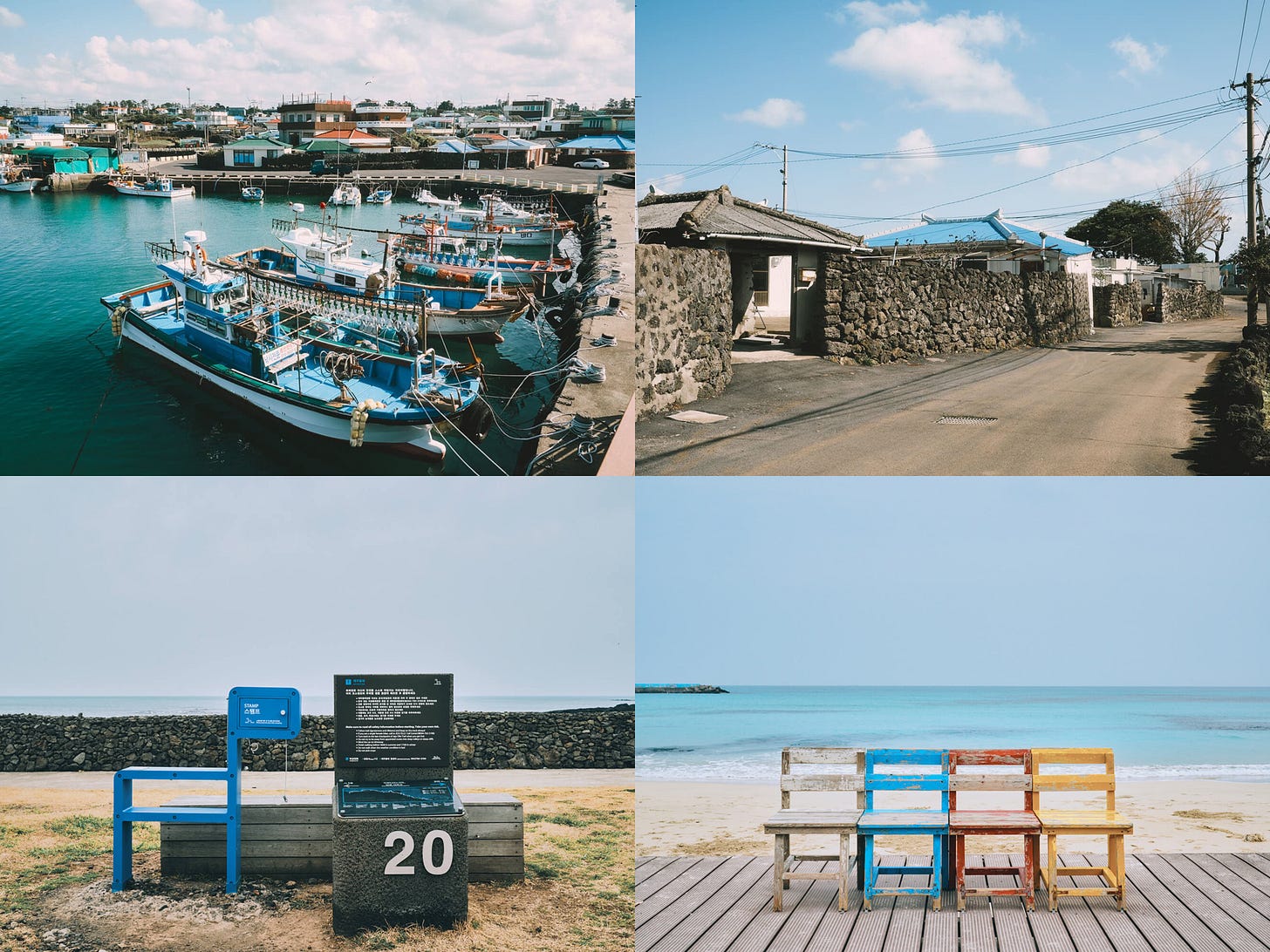
Here is what is in my neighborhood. https://www.nps.gov/acad/planyourvisit/hike-mdi.htm
You'll see why I've said Jeju-do reminds me of Mount Dessert Island (108 sq. miles), Maine, Acadia National Park but Jeju-do is a much larger island (714 sq. miles) and in many ways more dramatic. And then there is Isle au Haut ME. We live somewhere in between those amazing places. https://www.nps.gov/acad/planyourvisit/isle-au-haut.htm 113 sq. miles. I still think I will one day go to Jeju-do. For a month, I've had multiple tabs open on my computer with various dates and flights from BOS to ICN and BGR to ICN and a few tabs from ICN to CJU. but I also like the looks of trains in South Korea. ["Someday, someday, someday.." or "pipedream"...? - your words]